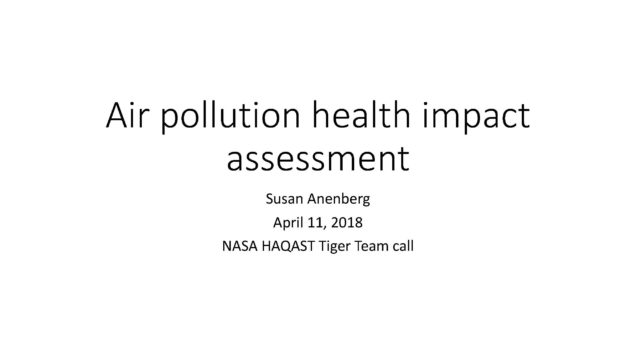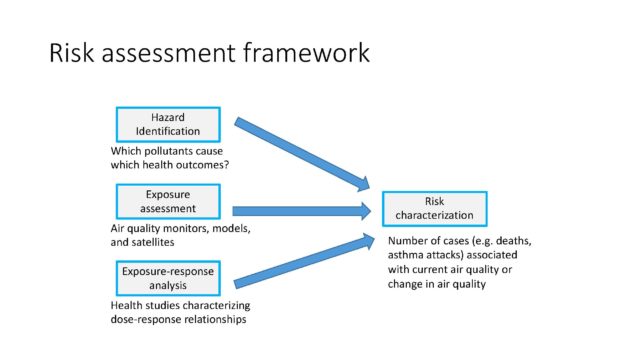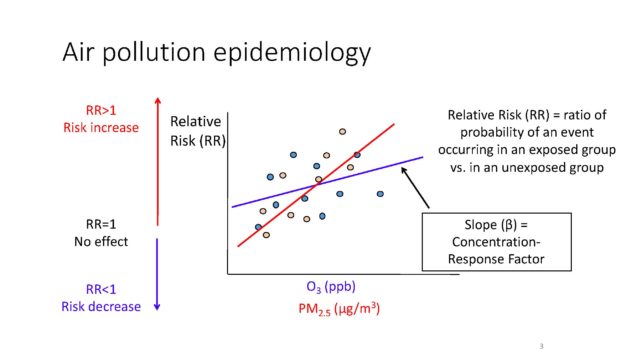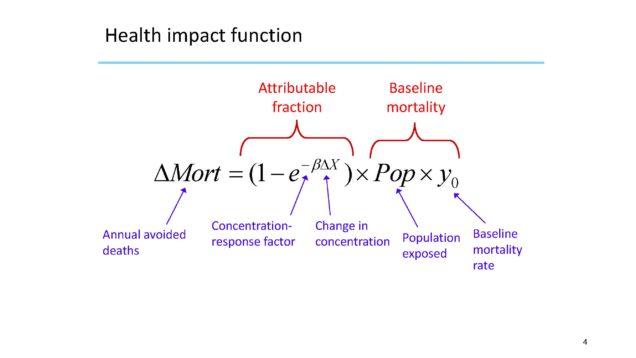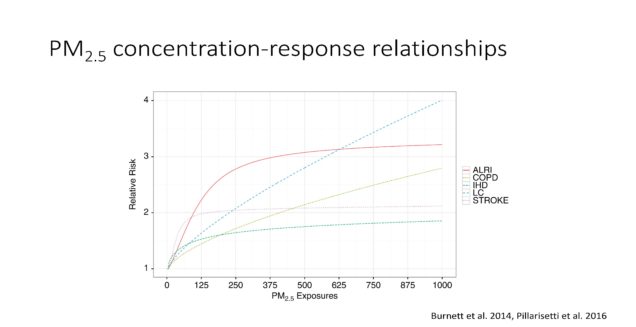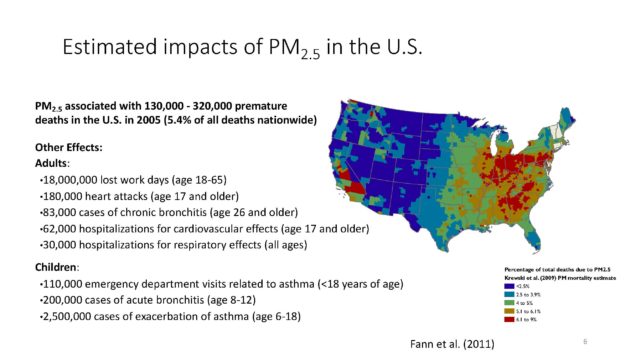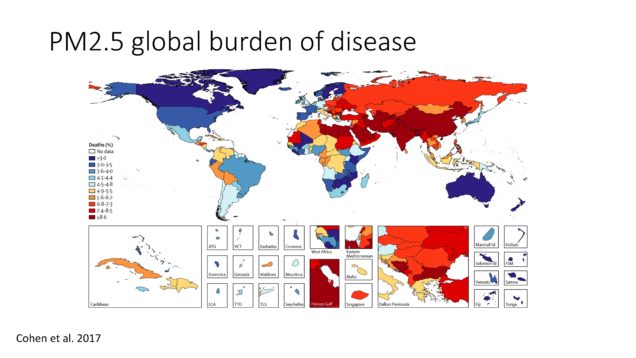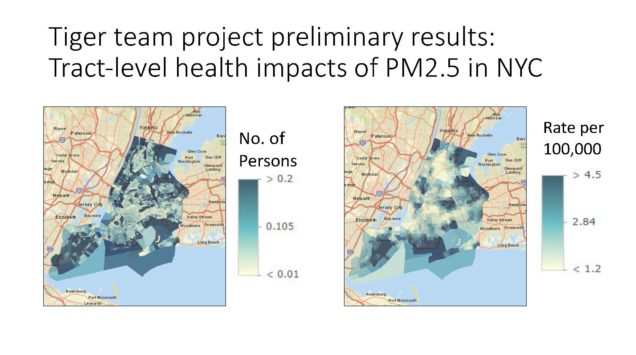Aim 5: Health Impacts
Compute health impacts from PM2.5 at the 1 km scale using the exposure estimates developed in Aims 2-4.
These slides were presented during our Tiger Team meeting in April for a tutorial on Health Impact Assessment (HIA) methods applied in different contexts. This method can be applied in the global scale (e.g. for the Global Burden of Disease), national scale (e.g. by the EPA to estimate PM2.5 burden of disease in the U.S.A), and at the local scale like we are doing for this study.
We are computing cases of health outcomes associated with PM2.5 exposure in each of the four geographic focus areas at the 1km level using the environmental Benefits Mapping and Analysis Program – Community Edition (BenMAP-CE). BenMAP-CE was developed and is maintained by the U.S. Environmental Protection Agency and is routinely used to estimate air pollution-related health risks and benefits of EPA air quality regulations. It has also been used to estimate the health impacts of air pollution at local scales. BenMAP-CE allows users to quantify cases of premature death and non-fatal health outcomes associated with air pollution by combining spatially-explicit exposure information input by the user with fine-scale data on population and baseline disease incidence rates, along with epidemiologically-derived exposure-response functions.
The results of this high-resolution health impact assessment will show the importance of the spatial resolution of the input exposure information in terms of the overall magnitude of health impacts among the total population, as well as the distribution of health impacts across key population subcategories. These results may inform how future analyses might be designed to illuminate environmental justice issues, and how mitigation approaches might be designed to minimize air pollution health risks across all population subgroups. Future work following this Tiger Team Project can investigate the importance of addressing movement of people between gridcells in the geographic domain (e.g. traveling from home to work and back), which could influence their estimated PM2.5 exposure levels and resulting health risks.
